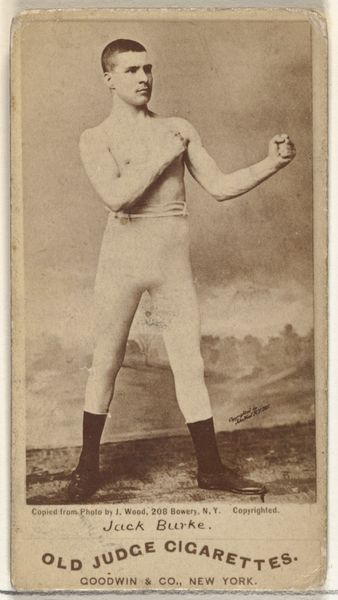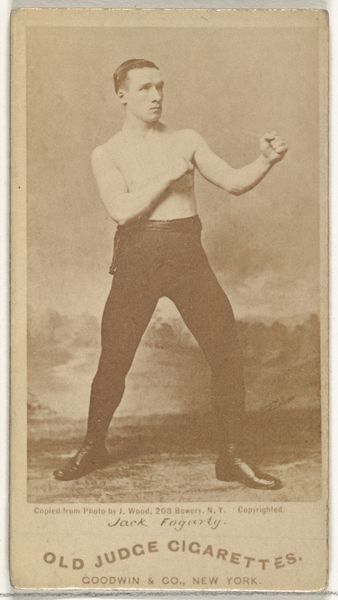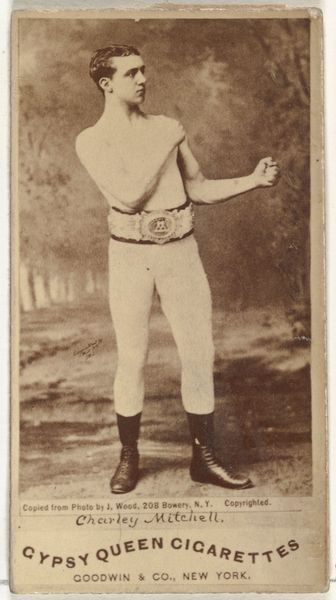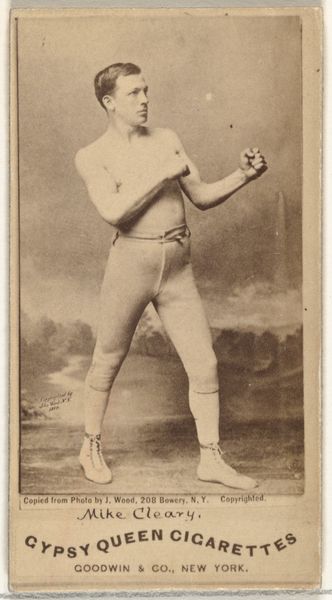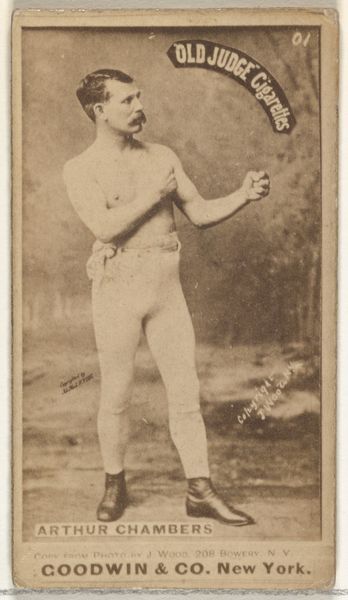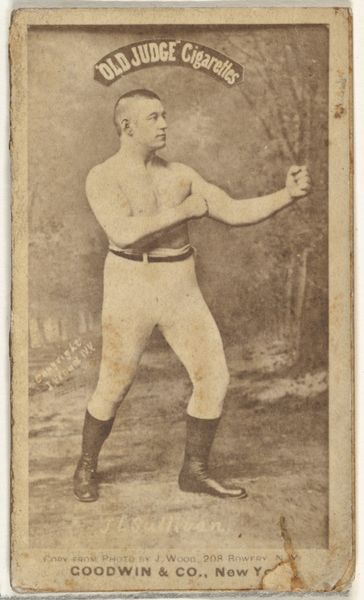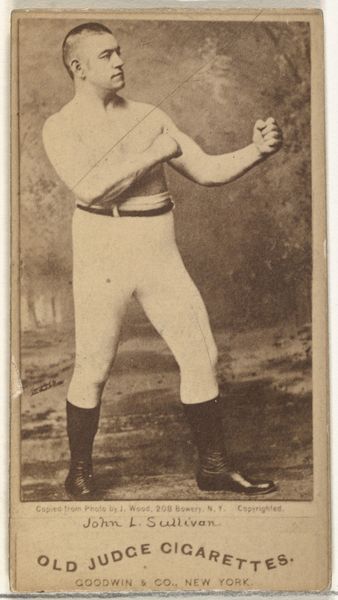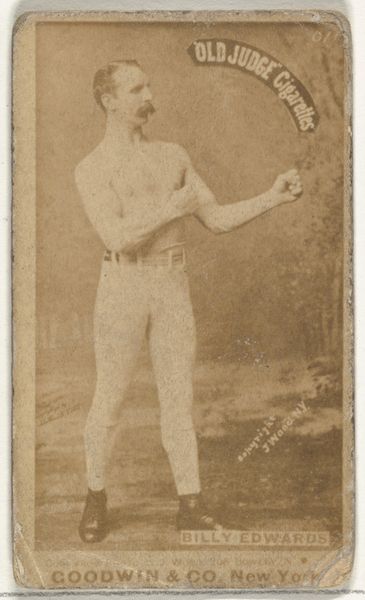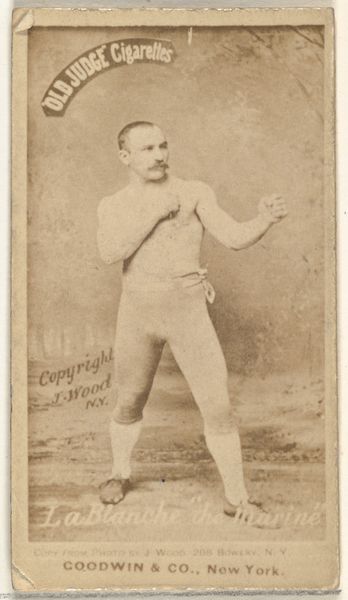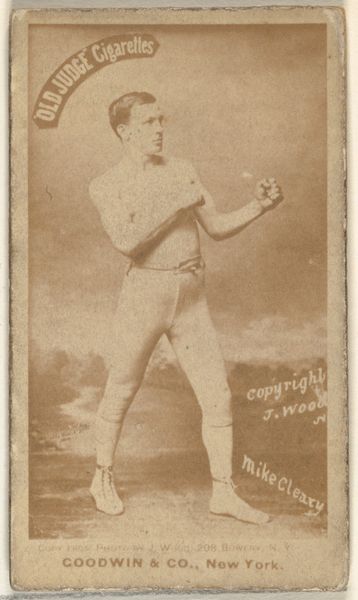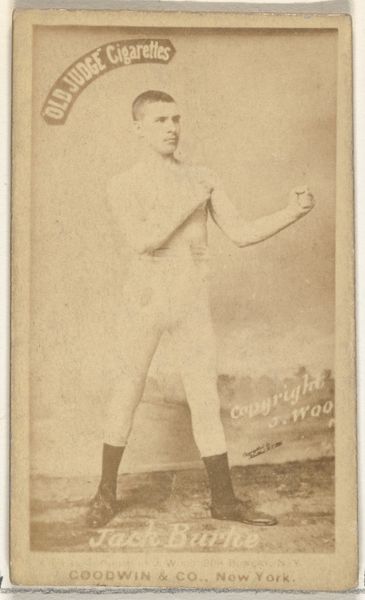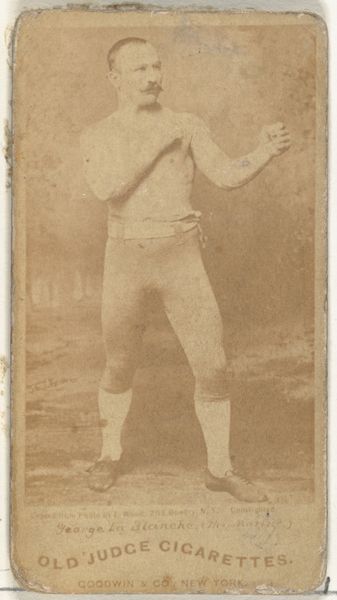
Tommy Warren, from the Celebrities and Prizefighters series (N174) for Old Judge Cigarettes 1887 - 1888
0:00
0:00
drawing, print
#
portrait
#
pencil drawn
#
photo of handprinted image
#
drawing
#
aged paper
#
toned paper
# print
#
pencil sketch
#
old engraving style
#
baseball
#
pencil drawing
#
ink colored
#
men
#
watercolour illustration
#
athlete
#
watercolor
Dimensions: sheet: 2 11/16 x 1 3/8 in. (6.9 x 3.5 cm)
Copyright: Public Domain
Curator: This image of Tommy Warren, a baseball player or perhaps a boxer, comes from a series of collectible cards issued between 1887 and 1888 by Goodwin & Company for their Old Judge Cigarettes. It’s currently held at the Metropolitan Museum of Art. Editor: My first thought is how much it resembles a vintage photograph, sepia-toned and a little grainy, despite ostensibly being a print. There's an interesting blend of formality and grit. Curator: Precisely! The sepia tone is suggestive of early photographic processes, yes, but the key here is understanding its function as a trade card, mass-produced to be included with tobacco products. This collapses traditional artistic hierarchies; it's both a portrait of a celebrity athlete and advertising material. Editor: I'm curious about the implications of a cigarette company using athletes to promote their brand. It feels so contradictory given modern health consciousness, but also speaks to a particular historical moment when physical prowess and mass-produced goods became intertwined in the public imagination. Curator: Absolutely. The cigarette cards functioned as a means of popularizing figures like Tommy Warren. The consumption habits, specifically tobacco use, played a role in elevating athletes to celebrity status, which were distributed widely and became a tool for marketing and branding. This connection, made so visibly here, shows how sport became embedded in a wider culture of consumerism. Editor: And there's also the materiality of it—it's on paper, likely thin and easily damaged. It was meant to be handled, traded, and potentially discarded, which adds a layer of ephemerality to the image. It shows an intentional blurring of lines between art, consumerism, and celebrity, intended for widespread circulation and consumption. Curator: Indeed. Considering this, the photograph suggests a deeper commentary on how our values, like athleticism, have become products within broader economies. It asks who produces the image, how it's distributed, and what message is encoded in that production process. Editor: So, instead of just viewing it as a vintage image, we should think about its active role in shaping the culture of that era. Curator: Precisely, thinking of it in its historical and commercial context deepens our understanding, allowing us to think of how the portrait participates in the networks of fame and manufacturing of social identity, making us more attentive to our contemporary moment.
Comments
No comments
Be the first to comment and join the conversation on the ultimate creative platform.
